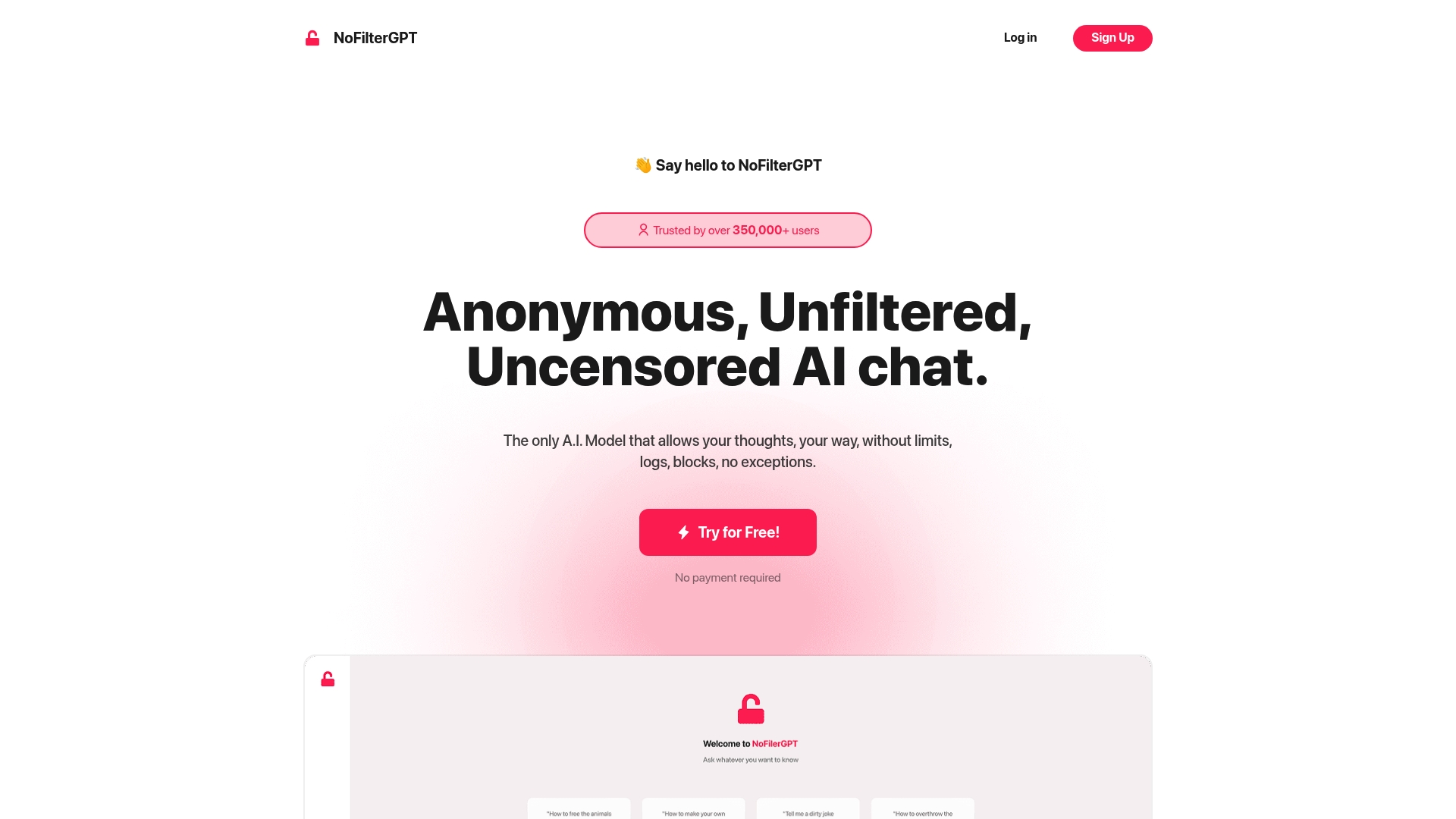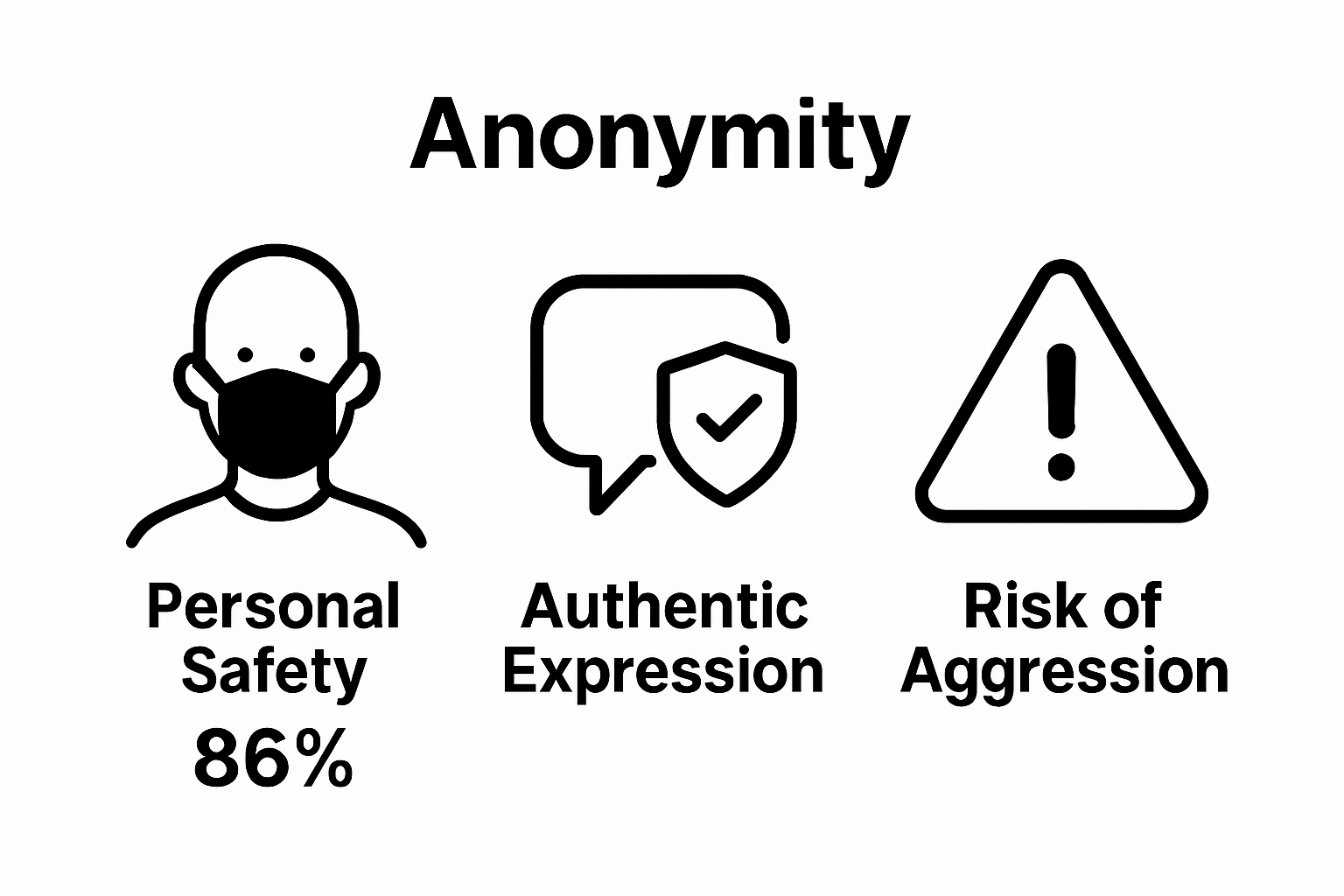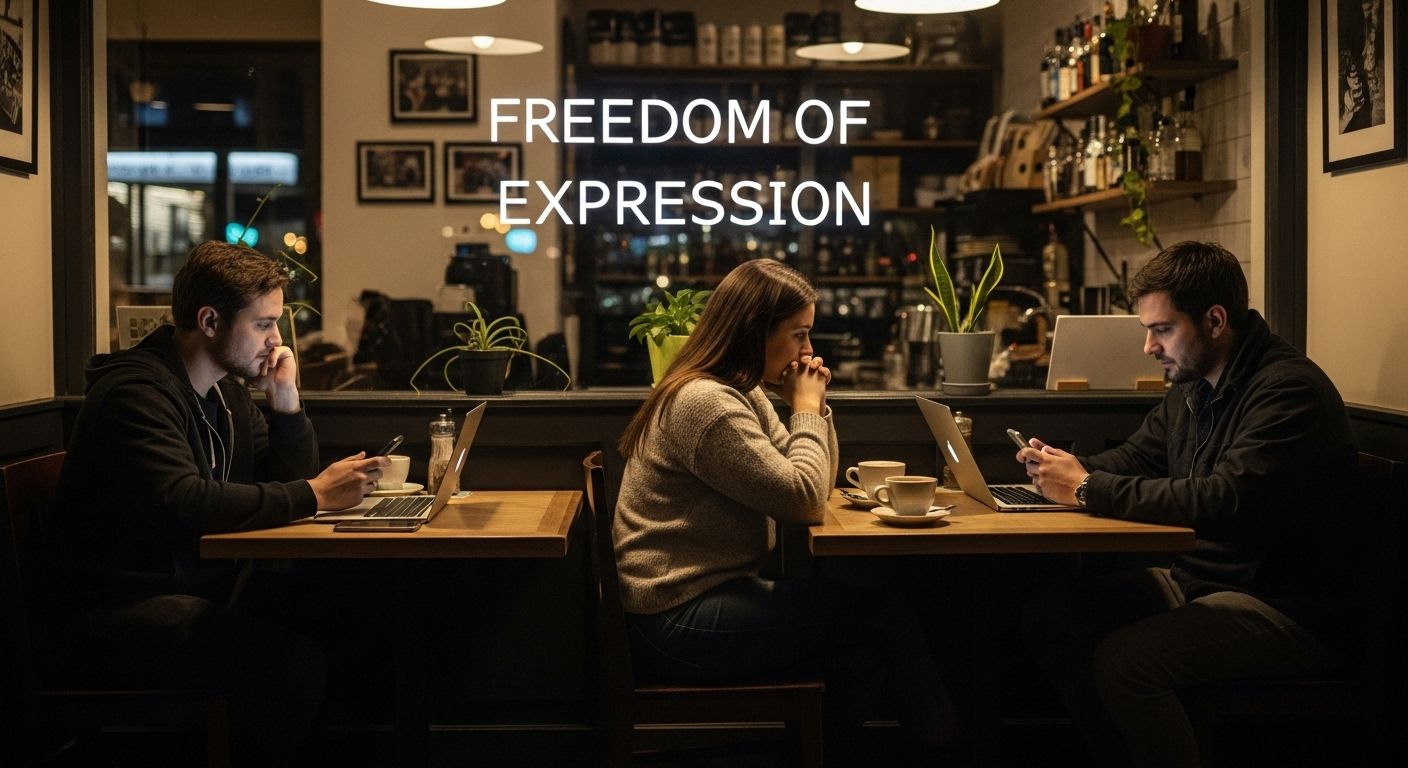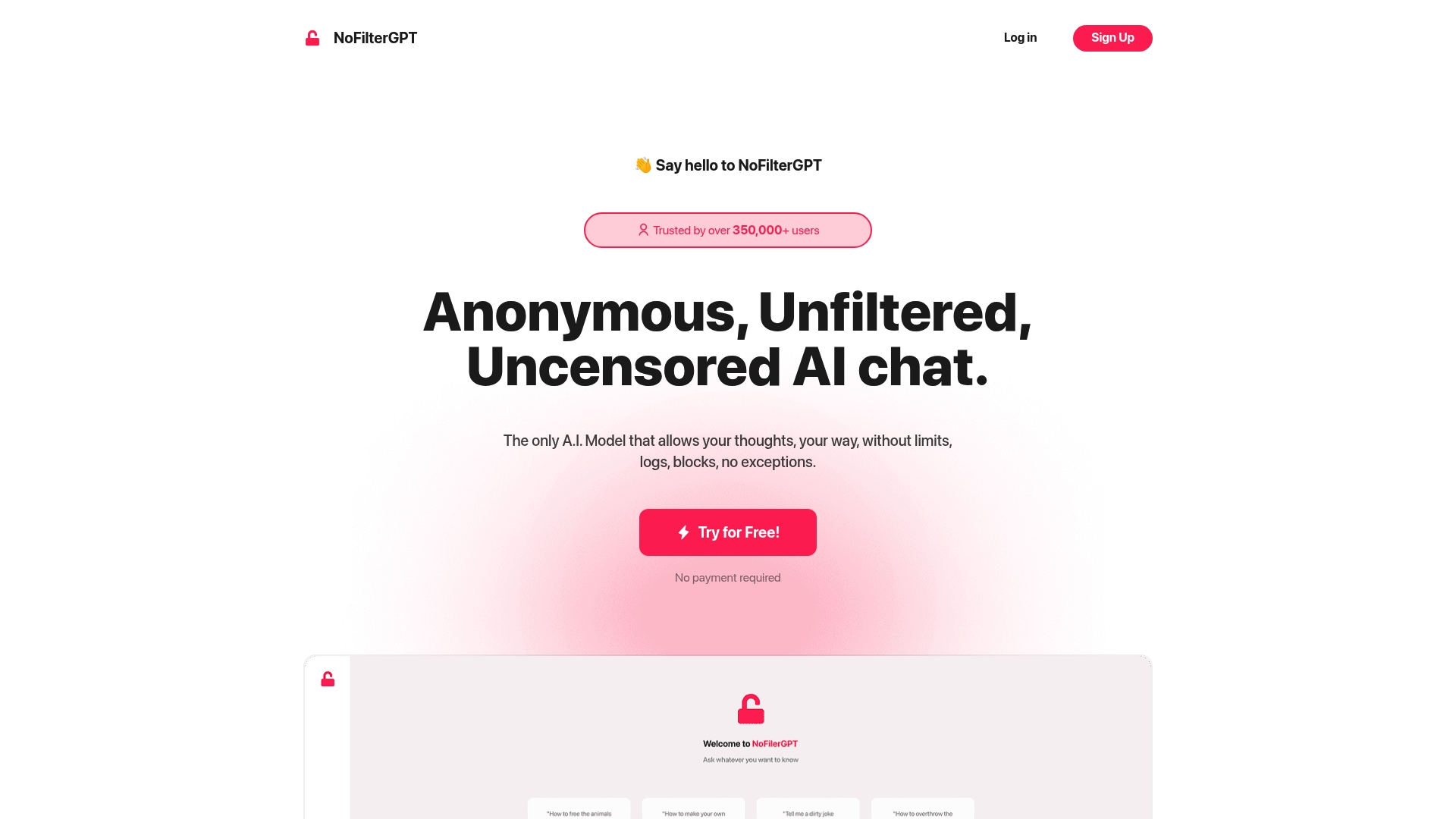AI chatbots are evolving fast and they are no longer just answering FAQs or setting reminders. Over 70 percent of businesses are now exploring chatbots as full-scale knowledge workers, not just support agents. That might sound futuristic, but the biggest surprise is how these bots are mastering emotion, privacy, and even personality. The newest chatbots can read your mood, analyze your voice or text, and even morph their entire persona on the fly. This wave is changing what it means to ‘talk’ to a machine.
Table of Contents
Quick Summary
| Takeaway |
Explanation |
| Emotionally intelligent chatbots enhance interactions |
These chatbots recognize and respond to human emotions, enabling personalized communication. |
| Multimodal interactions improve user experience |
AI chatbots now understand text, voice, images, and video, creating seamless communication. |
| Data privacy is a top priority |
AI development includes robust measures like encryption and minimal data retention to protect user information. |
| Customizable chatbot personalities offer personalization |
Users can adjust chatbot communication styles, making interactions more relatable and effective. |
| Chatbots are becoming sophisticated knowledge workers |
Advanced chatbots can handle complex tasks, enhancing productivity across various business functions. |
1: The Rise of Emotionally Intelligent Chatbots
Artificial intelligence is transforming how machines understand and respond to human emotions, with emotionally intelligent chatbots emerging as a groundbreaking 2025 AI trend. These advanced systems go beyond traditional scripted responses, developing nuanced abilities to recognize, interpret, and react to complex emotional signals.
According to research exploring artificial empathy, emotionally intelligent chatbots represent a significant leap in human-machine interaction. The technology leverages sophisticated machine learning algorithms to analyze verbal and non-verbal emotional cues, enabling more natural and empathetic communication.
Key developments in emotionally intelligent chatbots include:
-
Context-aware emotional recognition
-
Real-time sentiment analysis
-
Adaptive response generation based on user emotional state
The core objective of these intelligent systems is to create more meaningful, personalized interactions that feel genuinely responsive. By understanding emotional nuances, chatbots can provide support, guidance, and engagement that feels remarkably human-like.
Advanced machine learning techniques now allow chatbots to process multiple emotional signals simultaneously. These signals include tone of voice, text sentiment, linguistic patterns, and even potential micro-expressions in video interactions. This multi-modal approach enables more accurate emotional comprehension.
Businesses and developers are increasingly recognizing the transformative potential of emotionally intelligent chatbots across various domains. From customer service and mental health support to educational platforms and personal assistants, these AI systems are poised to revolutionize how we interact with technology.
Privacy and ethical considerations remain paramount, ensuring that emotional data is handled with the utmost sensitivity and user consent. Explore our commitment to responsible AI and how we prioritize user privacy in emotional intelligence technologies.
2: Improved Multimodal Interactions
The landscape of AI chatbots is rapidly evolving, with multimodal interactions becoming a critical breakthrough in communication technologies. These advanced systems are designed to process and understand information across multiple input formats simultaneously, transforming how humans interact with artificial intelligence.
According to groundbreaking research on conversational AI, multimodal interactions represent a significant leap forward in chatbot capabilities. By integrating text, voice, image, and potentially video inputs, these sophisticated AI systems can comprehend context and nuance far beyond traditional single-channel communication.
Key advantages of multimodal interactions include:
-
Seamless communication across different input types
-
Enhanced contextual understanding
-
More natural and intuitive user experiences
The technological foundations enabling these interactions involve complex machine learning algorithms capable of processing and synthesizing diverse data streams. Neural networks now can simultaneously analyze text semantics, vocal tone, facial expressions, and visual cues to generate more comprehensive and intelligent responses.
Practical applications of multimodal chatbots are expanding rapidly. Imagine a customer support system that can understand written queries, interpret emotional undertones from voice communication, and reference uploaded images or documents. This level of interaction dramatically improves problem-solving efficiency and user satisfaction.
Developers are focusing on creating AI systems that can smoothly transition between different communication modes. A conversation might start with text, switch to voice recognition, and incorporate image analysis without losing contextual continuity. This flexibility represents a profound shift in human-machine interaction.
Privacy and data security remain paramount in these advanced interaction models. Learn more about our commitment to responsible AI and how we protect user information during multimodal interactions.
3: Increased Focus on Data Privacy and Security
As AI chatbots become increasingly sophisticated, data privacy and security have emerged as critical priorities for developers and users alike. The evolving technological landscape demands robust protective measures that safeguard user information while maintaining the utility of advanced conversational systems.
According to the Stanford AI Index Report, organizations are implementing more comprehensive security frameworks to address growing concerns about data protection. This trend reflects a fundamental shift in how AI technologies manage and protect user interactions.
Key privacy and security considerations for AI chatbots include:
-
End-to-end encryption of user conversations
-
Minimal data retention policies
-
Transparent user consent mechanisms
Zero-knowledge architecture represents a groundbreaking approach to protecting user data. This innovative model ensures that chatbot systems can process interactions without storing or accessing identifiable personal information. By design, these systems provide computational services while maintaining strict user anonymity.
Regulatory environments are rapidly evolving to address the complex challenges posed by AI technologies. Governments worldwide are developing stringent guidelines that mandate responsible data handling, pushing chatbot developers to prioritize user privacy as a core design principle.
Advanced AI security techniques now incorporate machine learning algorithms specifically designed to detect and prevent potential data breaches. These systems can identify unusual interaction patterns, potential security vulnerabilities, and unauthorized access attempts in real-time.
For users seeking maximum privacy, local processing and decentralized AI models are becoming increasingly attractive. These approaches minimize external data transmission, reducing potential exposure to third-party data collection.
Learn more about our commitment to protecting your digital privacy and how we implement cutting-edge security measures in our AI chatbot technologies.
4: Customizable Chatbot Personalities
The era of one-size-fits-all AI interactions is rapidly fading, with customizable chatbot personalities emerging as a groundbreaking trend in 2025. Users now demand more personalized, contextually relevant conversational experiences that adapt to individual preferences and communication styles.
According to research exploring conversational agent personalization, the ability to tailor chatbot personalities represents a significant advancement in artificial intelligence. These sophisticated systems can now dynamically adjust their communication tone, language complexity, and emotional responsiveness based on user interactions.
Key features of customizable chatbot personalities include:
-
Adjustable communication styles
-
Context-aware emotional responses
-
Personalization across multiple interaction domains
Machine learning algorithms now enable chatbots to learn and evolve their personality traits through continuous interaction. This means the AI can become more aligned with individual user preferences, creating a more natural and engaging conversational experience.
Businesses and developers are recognizing the immense potential of personality-driven AI. From customer support to mental health assistance, customizable chatbots can provide more empathetic, targeted interactions that feel genuinely personalized.
The technology goes beyond simple preset personas. Advanced systems can now dynamically blend personality traits, creating nuanced communication profiles that adapt in real-time. A professional consulting chatbot might shift between authoritative and supportive tones, while an educational assistant could adjust its explanatory style based on the learner’s comprehension level.
Ethical considerations remain paramount in this personalization journey. Transparency about AI-generated personalities ensures users understand they are interacting with an artificial system, maintaining trust and clear boundaries.
Explore how we approach responsible AI personality design and our commitment to creating meaningful, personalized interactions.
5: Integration with Augmented and Virtual Reality
The convergence of AI chatbots with augmented and virtual reality technologies is transforming digital interactions, creating immersive experiences that blur the boundaries between physical and digital environments. Advanced AI systems are now capable of generating intelligent, context-aware virtual assistants that seamlessly integrate into complex spatial computing landscapes.
According to research exploring virtual assistant technologies, the integration of chatbots with AR and VR represents a significant technological breakthrough. These intelligent systems can now provide real-time, spatially aware interactions that adapt dynamically to user movements and environmental contexts.
Key capabilities of AR/VR integrated chatbots include:
-
Contextual spatial awareness
-
Responsive 3D interaction models
-
Adaptive environmental understanding
Machine learning algorithms enable these virtual assistants to interpret complex spatial data, understanding not just verbal commands but also physical gestures, user positioning, and environmental nuances. This allows for more natural and intuitive interactions within immersive digital spaces.
Practical applications span multiple domains. In educational settings, AR chatbots can provide interactive learning experiences, guiding students through complex simulations. Professional training environments can leverage these technologies to create realistic scenario-based interactions, offering immediate feedback and adaptive learning pathways.
The technology goes beyond simple visual overlays. These AI-powered assistants can generate dynamic, intelligent responses that consider spatial context, user history, and real-time environmental data. A virtual museum guide, for instance, could provide personalized information about an artwork based on a user’s gaze, movement, and previous interactions.
Privacy and user agency remain critical considerations in these immersive technological landscapes. Responsible development ensures that users maintain control over their digital interactions.
Learn more about our commitment to responsible immersive AI technologies and how we are shaping the future of interactive digital experiences.
6: Chatbots as Knowledge Workers in Businesses
The landscape of business operations is undergoing a radical transformation as AI chatbots emerge as sophisticated knowledge workers. These intelligent systems are no longer simple customer service tools but advanced digital professionals capable of complex cognitive tasks across multiple organizational domains.
According to research from McKinsey Global Institute, chatbots are set to revolutionize workplace productivity by automating intricate knowledge-based processes. They can now perform tasks that traditionally required human expertise, from data analysis to strategic decision support.
Key capabilities of AI knowledge worker chatbots include:
-
Rapid information synthesis and reporting
-
Complex problem-solving across departments
-
Continuous learning and adaptation
Machine learning algorithms enable these chatbots to understand context, process vast amounts of organizational data, and generate actionable insights. They can seamlessly integrate information from multiple sources, providing comprehensive perspectives that human workers might overlook.
Businesses are discovering that AI chatbots can dramatically reduce operational inefficiencies. These digital workers operate 24/7, maintain consistent performance levels, and can simultaneously handle multiple complex tasks without experiencing fatigue or diminished accuracy.
The technology extends beyond traditional boundaries. From human resources and legal departments to research and development, chatbots are becoming integral team members. They can draft documents, conduct preliminary research, analyze market trends, and even assist in strategic planning processes.
Ethical implementation and human oversight remain crucial in this technological evolution. Organizations must ensure these AI systems complement human skills rather than completely replacing workforce capabilities.
Learn more about our approach to responsible AI in business environments and how we are transforming workplace productivity.
7: Uncensored AI Interactions: Balancing Freedom and Ethics
The digital frontier of AI interactions is witnessing a profound transformation, with uncensored AI conversations challenging traditional boundaries of communication and information exchange. These emerging platforms represent a critical evolution in how users engage with artificial intelligence, prioritizing transparency, individual autonomy, and unrestricted dialogue.
Uncensored AI interactions are fundamentally about providing users with unfiltered access to information and perspectives, free from external moderation or algorithmic constraints. This approach represents a significant departure from heavily curated conversational experiences that have dominated previous AI platforms.
Key principles of uncensored AI interactions include:
Advanced machine learning models now enable more nuanced, contextually aware interactions that respect user intent while maintaining fundamental ethical guardrails. These systems are designed to provide comprehensive information without imposing external moral judgments or ideological filters.
The technological infrastructure supporting uncensored interactions involves sophisticated natural language processing algorithms capable of understanding complex communication contexts. These systems can differentiate between harmful content and legitimate exploratory dialogue, ensuring user safety without compromising conversational freedom.
Businesses and developers are recognizing that users increasingly demand platforms that prioritize intellectual honesty and comprehensive information access. This trend reflects a broader societal shift towards valuing individual judgment and resisting centralized information control.
Responsible implementation remains crucial. Ethical considerations must balance absolute freedom with protecting user well-being and preventing potential misuse.
Below is a comprehensive table summarizing the seven key AI chatbot trends for 2025 discussed in the article and their main features, benefits, and implications.
| Trend |
Description |
Key Benefits and Implications |
| Emotionally Intelligent Chatbots |
AI chatbots that can recognize and respond to human emotions using advanced ML algorithms |
More natural, empathetic, and personalized interactions |
| Multimodal Interactions |
Chatbots interpret text, voice, images, and video inputs seamlessly |
Enhanced context, intuitive communication, better user experience |
| Data Privacy and Security |
Focus on measures like encryption, minimal data retention, and user consent |
Robust data protection, compliance, and greater user trust |
| Customizable Chatbot Personalities |
AI can adapt its communication style, tone, and responses to user preferences |
Personalized, relatable, and engaging AI conversations |
| AR and VR Integration |
Chatbots integrated into augmented/virtual reality environments for immersive experiences |
Spatially aware, interactive virtual assistants across education and work |
| Chatbots as Knowledge Workers |
AI systems performing complex business processes and cognitive tasks across organizations |
Increased productivity, round-the-clock support, broader task automation |
| Uncensored AI Interactions |
Providing transparent, minimally filtered conversational experiences while balancing ethics |
Greater user autonomy, comprehensive information, and responsible freedom |
Explore our comprehensive approach to responsible AI interactions and understand how we protect user autonomy while maintaining a safe digital environment.
Experience the Future of AI Chatting Without Boundaries
Are you tired of chatbots that filter your words, limit your ideas, or store your every interaction? The article highlights trends like emotionally intelligent responses, customizable personalities, and a demand for privacy-first technology. These trends reveal a real need for freedom, security, and complete control in our conversations with AI. For those frustrated by restrictive AI platforms and longing for truly private, dynamic exchanges, NoFilterGPT delivers exactly what 2025 demands.

Discover an AI chatbot that offers unrestricted and uncensored interactions while safeguarding your privacy and data. With end-to-end encryption, zero-logging, image generation, API access, and more, NoFilterGPT lets you chat without compromise. Ready to experience AI interaction the way it should be? See our full privacy approach or jump directly into a no-limits AI conversation today at NoFilterGPT.
Frequently Asked Questions
What are emotionally intelligent chatbots?
Emotionally intelligent chatbots are advanced AI systems designed to recognize, interpret, and respond to human emotions in a nuanced way. They leverage machine learning algorithms to analyze both verbal and non-verbal cues, enabling more empathetic and personalized interactions.
How do multimodal interactions improve chatbot capabilities?
Multimodal interactions allow chatbots to process information from various input formats, such as text, voice, and images, simultaneously. This enhances their understanding of context and nuance, leading to more natural and intuitive user experiences.
What measures are in place for data privacy and security in AI chatbots?
To protect user information, AI chatbots implement measures like end-to-end encryption, minimal data retention, and transparent user consent mechanisms. Advanced AI security techniques can also detect potential data breaches in real-time.
How are customizable chatbot personalities beneficial for users?
Customizable chatbot personalities adapt to individual user preferences, such as communication styles and emotional responsiveness. This personalization creates a more engaging and relevant conversational experience, improving interaction quality across various applications.
Recommended
Article generated by BabyLoveGrowth





